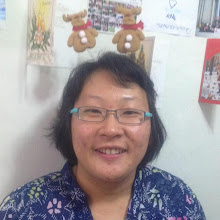There is availability of a wide variety of economical, valid and widely applicable questionnaires that have been developed for assessing the students' perceptions of classroom environment (Fraser, 1998b). These questionnaires have been cross-validated for use in several Asian countries.
Instruments for Assessing Classroom Environment There are four commonly used instruments that have been in Asia. They are Questionnaire on Teacher Interaction (QTI), Science Laboratory Environment Inventory (SLEI), Constructivist Learning Environment Survey (CLES) and What is Happening In This Class? (WIHIC).
Historically, some questionnaires were development in the late 1960s. Learning Environment Inventory (LEI) began in conjunction with evaluation and research related to Harvard Project Physics (Walberg & Anderson, 1968) The Classroom Environment Scale (CES) (Moos & Trickett, 1987) grew out of a comprehensive program of research involving psychiatric hospitals, prisons, hospitals. (Moos, 1974) QTI - Research focuses on the nature and quality of interpersonal relationships between teachers and students (Wubbels & Brekelmans, 1998; Wubbels & Levy, 1993). It was drawn from a theoretical model of proximity (cooperation-opposition) and influence (dominance-submission). QTI was developed to assess student's perceptions of eight behavioural aspects, The QTI has been used in a few large-scale studies in Asia. Moreover, QTI has been cross-validated and has been used in Singapore context as provided by Quek, Fraser and Wong's 2001 study. The validity and usefulness of QTI has been supported as the study in Singapore has shown. SLEI - Assessment of the environment of Science Laboratory Classes at the senior high school or higher education levels. (Fraser, Giddings & McRobbie, 1995) CLES - Developed to assess the degree to which a particular classroom environment is consistent with a constructivist epistemology, and to assist teachers to reflect on their epistemological assumptions and reshape their teaching practice. (Taylor, Fraser & Fisher, 1997) WIHIC - Combines modified versions of salient scales from a wide range of existing questionnaires with additional scales that accomodate contemporary educational concerns (e.g. equity and constructivism). Even though it is new, it has been widely used in Asia context. It has been translated into several Asian languages and cross-validated. The English version of WIHIC in Singapore by Fraser and Chionh (2000) reported a strong validity and reliability for both an actual and a preferred form of the WIHIC. From the paper, research has shown the associations between student outcomes and the learning environment. There are differences between student and teacher perceptions of actual and preferred environments. Determinants of classroom environment in Asia has been frequently tested on student gender. Comparisons of student's perceptions reveal that females typically have positive views of their classroom learning environments as compared to the males students.
Reflection: The paper has described in detailed the various instruments for assessing the learning environment. The key question that I asked as I read through the article is why are there so many questionnaires designed? It was after reading through the articles and listening to the short lectures by Dr Quek that I realised that instruments are validated over time and different groups of participants and used in different context and age group and for various purposes. Looking at how much time and effort has been spent to design the instruments and testing for their validity and reliability has provided greater insights to how high the researchers have regarded their work. Therefore, unless it is absolutely necessary, the instruments are already useful to obtain the results for the purposes need, and there is no need to reinvent the wheel and invent a very new instrument.


No comments:
Post a Comment